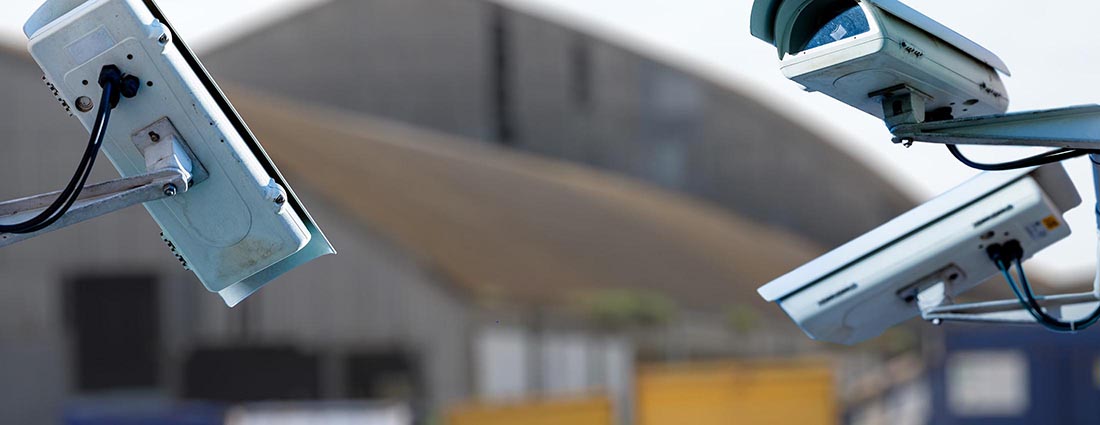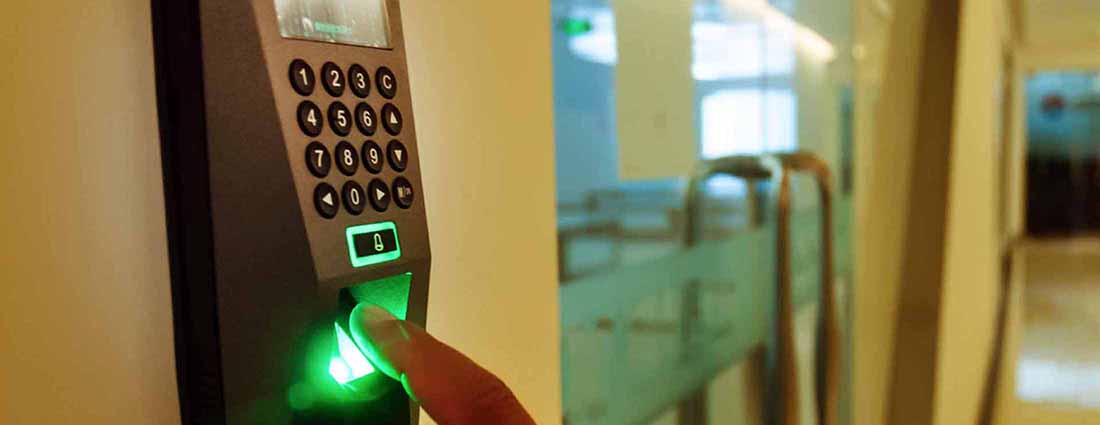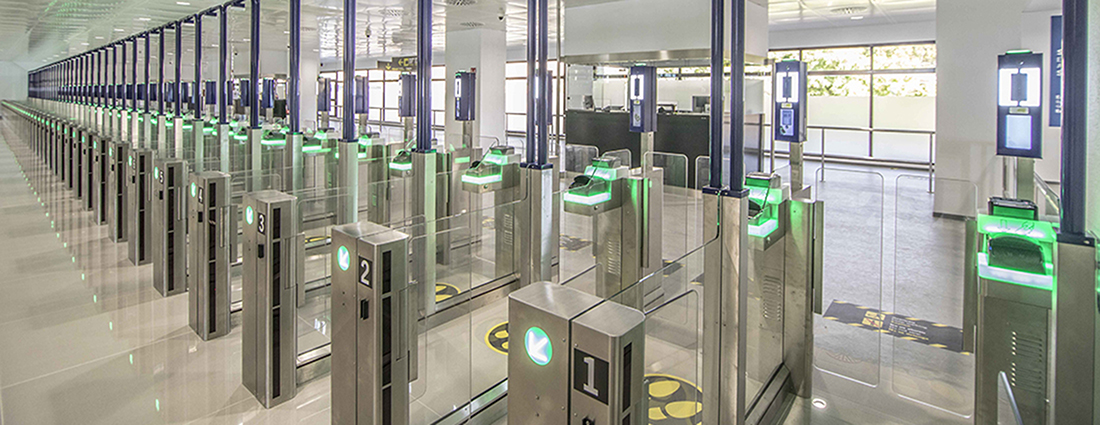Unit 1&2, Hindustan Kohinoor Estate, Next to Embassy 247, LBS Marg, Vikhroli West, Mumbai-400083.
INFRASTRUCTURE THAT KEEPS YOUR VISITORS, YOUR CUSTOMERS, AND YOUR EMPLOYEES PROTECTED.
Startech Engineers (STARTECH) can design and install an integrated security solution for your business including access control, video surveillance, security communication, intrusion systems, and monitoring. At STARTECH, our service department provides 24/7 technical response to your security needs, including service and maintenance of existing and legacy systems. Our goal is to provide a customized solution for your business to protect your employees, assets and visitors from security threats at all levels.
STARTECH has a long history in the life safety business with a proven track record of protecting life and property. As the industry leader in Fire Detection and Suppression, STARTECH also has the experience and expertise to address all of your electronic security needs.
Startech Engineers creates value by empowering our clients to have one stop solution for all of their Life Safety needs: Fire Detection and Fire Protection. STARTECH can eliminate the disconnect between Security Systems and Fire Safety Systems and provide our clients with a turnkey solution to their Life Safety needs.
Contact us today to have the latest security system installed in your building or on your business campus.
Our solutions include:
Startech Engineers (STARTECH) can design and install an integrated security solution for your business including access control, video surveillance, security communication, intrusion systems, and monitoring. At STARTECH, our service department provides 24/7 technical response to your security needs, including service and maintenance of existing and legacy systems. Our goal is to provide a customized solution for your business to protect your employees, assets and visitors from security threats at all levels.
STARTECH has a long history in the life safety business with a proven track record of protecting life and property. As the industry leader in Fire Detection and Suppression, STARTECH also has the experience and expertise to address all of your electronic security needs.
Startech Engineers creates value by empowering our clients to have one stop solution for all of their Life Safety needs: Fire Detection and Fire Protection. STARTECH can eliminate the disconnect between Security Systems and Fire Safety Systems and provide our clients with a turnkey solution to their Life Safety needs.
Contact us today to have the latest security system installed in your building or on your business campus.
Our solutions include:
-
CCTV
 When it comes to securing your business, there are many different types of CCTV to choose from. Surveillance plays a huge part in today’s society, and with cameras all around us, our day-to-day lives are experiencing higher levels of security each day.
When it comes to securing your business, there are many different types of CCTV to choose from. Surveillance plays a huge part in today’s society, and with cameras all around us, our day-to-day lives are experiencing higher levels of security each day.
What many people don’t know, however, is that there are a variety of different types of CCTV camera which suit different situations or premises, and that selecting the proper camera for the right application really is vital.
Our Engineers are well trained in Installation and commissioning of cameras from various reputed brands and types
Below mentioned are various types of cameras installed by Startech:- Bullet Type Cameras are designed for capturing images in a fixed area. These cameras are recognized by their thin and cylindrical design. There are also classifications of Ultra Bullet distinguished by their smaller size and cheaper price.
- Dome Cameras, named after the shape of their housing are designed for in-store installations. It works in two ways as it is unobtrusive but visible, thus, it warns people that the area is protected by a CCTV network and gives comfort to its clients for its security.
- Discreet CCTVs are cameras in disguise, they could look like a fan or any other thing that would not seem suspicious in the area.
- Infrared Cameras are designed for evening lookouts. It captures images with the help of its infrared lighting surrounding its lens.
- Day/Night Types are used for 24/7 installation, these cameras compensate light conditions with its wide dynamic range to function in glare, direct sunlight, reflections and strong backlight.
- Varifocal Cameras are designed to allow zooming in and out without losing focus on the image.
- Network Cameras allow transmission of images through the internet with controlled bandwidth.
- Wireless cameras are cameras that may or may not be connected to the internet. These cameras use signalling devices to transmit images from camera to viewing area.
- PTZ Cameras or pan-tilt-zoom are cameras that can moved. There are variations of these cameras that are programmable and are manually controllable. This allows viewers to have more freedom and control on viewing things.
- High definition cameras are often used in casinos or high risk establishment. With its high resolution lens, capturing images are possible giving viewers a finer detail on taken images.
Contact us today to have the latest CCTV installed in your building or on your business campus. -
ACCESS CONTROL SYSTEM
 Introduction to Access Control Systems
Introduction to Access Control Systems
What Is An "Access Control System”?
Over the years, access control systems have become more and more sophisticated. Today, the term "access control system" most often refers to a computer-based, electronic card, biometric, retina detection, face detection and may more access control system. The access control system uses a special technology, rather than a brass key, to permit access into the secured area.
When used within this document, the term "access control system" refers to an electronic /biometric etc. access control system.
Access control systems are most commonly used to control entry into exterior doors of buildings. Access control systems may also be used to control access into certain areas located within the interior of buildings.
The purpose of an access control system is to provide quick, convenient access to those persons who are authorized, while at the same time, restricting access to unauthorized people.
Basic Components of an Access Control System Access control systems vary widely in type and complexity. However, most card access control systems consist of at least the following basic components:
Access Cards
The access card may be thought of as an electronic "key". The access card is used by persons to gain access through the doors secured by the access control system. Each access card is uniquely encoded. Most access cards are approximately the same size as a standard credit card, and can easily be carried in a wallet or purse.
Card Readers
Card readers are the devices used to electronically "read" the access card. Card readers may be of the "insertion" type (which require insertion of the card into the reader), or may be of the "proximity" type (which only require that the card be held in a 3" to 6" proximity of the reader. Card readers are usually mounted on the exterior (non-secured) side of the door that they control.
Access Control Keypads
Access control keypads are devices which may be used in addition to or in place of card readers. The access control keypad has numeric keys which look similar to the keys on a touch-tone telephone.
The access control keypad requires that a person desiring to gain access enter a correct numeric code. When access control keypads are used in addition to card readers, both a valid card and the correct code must presented before entry is allowed.
Where access control keypads are used in place of card readers, only a correct code is required to gain entry.
Electric Lock Hardware
Electric lock hardware is the equipment that is used to electrically lock and unlock each door that is controlled by the access control system.
There are a wide variety of different types of electric lock hardware. These types include electric locks, electric strikes, electromagnetic locks, electric exit devices, and many others. The specific type and arrangement of hardware to be used on each door is determined based on the construction conditions at the door.
In almost all cases, the electric lock hardware is designed to control entrance into a building or secured space. To comply with building and fire codes, the electric lock hardware never restricts the ability to freely exit the building at any time.
Access Control Field Panels
Access control field panels (also known as "Intelligent Controllers") are installed in each building where access control is to be provided. Card readers, electric lock hardware, and other access control devices are all connected to the access control field panels.
The access control field panels are used to process access control activity at the building level. The number of access control field panels to be provided in each building depends on the number of doors to be controlled. Access control field panels are usually installed in telephone, electrical, or communications closets.
Access Control Server Computer
The access control server computer is the "brain" of the access control system. The access control server computer serves as the central database and file manager for the access control system; and is responsible for recording system activity, and distributing information to and from the access control field panels.
Normally, a single access control server computer can be used to control a large number of card-reader controlled doors. The access control server computer is usually a standard computer which runs special access control system application software. In most all cases, the computer is dedicated for full-time use with the access control system.
Contact us today to have the latest access control system installed in your building or on your business campus. -
INTRUSION ALARM SYSTEM
 There is a great deal of flexibility in the way an intrusion alarm system can be designed for a building. The designer has a great deal of latitude in selecting the quantity and type of equipment that will be used, and in determining where this equipment will be located.
There is a great deal of flexibility in the way an intrusion alarm system can be designed for a building. The designer has a great deal of latitude in selecting the quantity and type of equipment that will be used, and in determining where this equipment will be located.
Depending on the owner’s security requirements and budget, the designer may choose to design a simple, “bare bones” system, or may choose to design a deluxe, “high-security” system. The primary difference between a simple intrusion alarm system and a more elaborate one is the number and type of detection devices used.
For example, in a low-cost “bare-bones” system, the designer might choose to install detection devices only at a few points in the building where he feels that an intruder would be most likely to enter. An example of this type of system would be a building where contact switches were installed only on the entrance doors to the building.
In a “high security” system, the designer considers every possible way in which an intruder could enter the building, and places detection devices in such a manner that the intruder is quickly detected in every case. An example of this type of system is the building where contact switches are installed on every door, glass breakage detectors are placed near every window, and motion detectors are provided in every room.
In the real world, most intrusion alarm systems are designed to fall somewhere in between these two extremes. Most systems provide more protection than the basic “bare-bones” system with contact switches only, but not the comprehensive protection provided by the “high-security” system with detection devices in every room.
Exactly how many detection devices should be provided in any given building, what type of detection devices should be used, and where these detection devices should be placed is the subject of great debate among intrusion alarm system designers.
While each different system designer has his or her own idea of what the best arrangement of detection devices is, there are four basic “design concepts” which are commonly used:
Perimeter Protection Concept
The “perimeter protection” concept provides detection at the exterior or “perimeter” of the building. The goal of perimeter protection is to detect the intruder at the point of entry.
Complete perimeter protection usually requires that contact switches be installed on every perimeter door and opening window, and that glass breakage detectors be installed near every glass door and window on the exterior of the building.
Interior Protection Concept
The “interior protection” concept provides detection within the interior of the building. The goal of interior protection is to detect the intruder once he has gained entry into the inside of the building.
Complete interior protection requires that motion detectors be installed in every room and corridor of the building. Interior protection can also be achieved by installing contact switches on the interior doors of the building.
Combined Protection Concept
The “combined protection” concept fully combines the detection capabilities of both the perimeter detection concept and the interior protection concept.
The combined protection concept utilizes perimeter detection devices, such as contact switches on exterior doors, as well as interior protection devices, such as motion detectors installed in rooms and corridors.
The combined protection concept provides the benefits of both perimeter protection and interior protection, and is commonly used in “high security” applications, such as at a jewellery store or at warehouses that contain high-value merchandise.
Hybrid Protection Concept
The “hybrid protection” concept utilizes some portions of the perimeter protection concept, and some portions of the interior protection concept.
The goal of the hybrid concept is to take advantage of the benefits of both perimeter and interior protection, while at the same time keeping the cost of the system below the cost of the fully “combined” system described above.
The typical hybrid system uses partial perimeter detection and partial interior protection. An example of a system designed using the hybrid concept would be a building where contact switches were installed on perimeter doors, and motion detectors were installed in hallways and corridors. This system does not provide complete perimeter protection (there are no glass breakage detectors), and does not provide complete interior protection (motion detectors are not provided in every room), yet the combination of detection devices together provides a reasonable level of protection for the building.
There is a great deal of flexibility in the way a hybrid system can be designed. The designer may choose to provide full perimeter protection in some portions of the building, and choose to have only partial perimeter protection in other parts of the building. The same is true with interior protection; complete interior protection can be provided in some areas, while partial or no interior protection can be provided in other areas.
Contact us today to have the latest Intrusion Alarm System installed in your building or on your business campus. -
ENTRANCE CONTROL SYSTEM
 Pedestrian access control systems enable controlled and secure access to areas defined by the operators. They can be used for access control at entrances to office and administrative buildings, industrial installations, banks, authorities and many other places.
Pedestrian access control systems enable controlled and secure access to areas defined by the operators. They can be used for access control at entrances to office and administrative buildings, industrial installations, banks, authorities and many other places.
Full-height rotor turnstile
Single-ENTRY equipment for pedestrians
Full-height rotor turnstiles offer a high level of security for single-entry walk-through crossing points.
They are particularly suitable for securing a site entrance or controlling access to specific secure areas, external and internal. They are firmly anchored to the ground.
They can be configured to manage traffic flows in one or both directions.
Tripod turnstile
Tripod turnstiles guarantee secure entry to certain areas of buildings. More compact than full-height rotor turnstiles, they control single-entry access for pedestrians.
They are particularly well suited to high-traffic reception environments and help to control traffic flow (one entry at a time).
Tripod turnstiles are activated by an access reader that can be fitted directly to the turnstile or controlled remotely. When the access control system grants entry, the turnstile opens the access point for the visitor or employee.
Secure fast lane
Secure fast lanes allow single entry to specific access areas inside buildings, allowing pedestrian traffic to flow freely (traffic flow up to twice as fast as a tripod turnstile).
They offer a high level of security, and are easily integrated in the building architecture with their clean lines and discreet aesthetics.
Floor space requirements vary according to the model, although the speed of access they provide is a key asset.
Barrier arms
Access control for vehicles
Barriers are used to manage vehicle access. They can be controlled from Security access control software. Different formats are available to suit the configuration of your external areas:- Automatic road barrier
- Up and over gates
- Slide beams
- Retractable barriers
Contact us today to have the latest Entrance Control System installed in your building or on your business campus.


